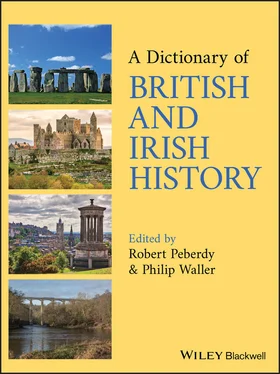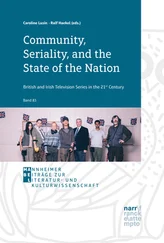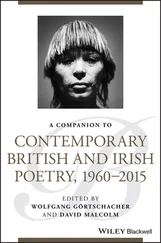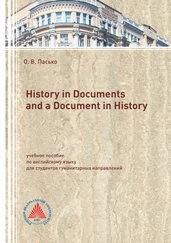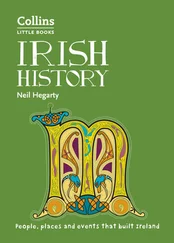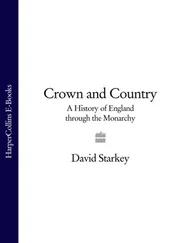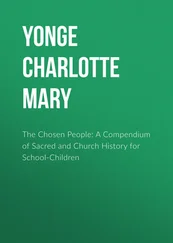1 ...8 9 10 12 13 14 ...57 AGRICULTURE, SOUTHERN IRELAND
Agriculture predominated in the economy of the IRISH FREE STATE (founded 1922), accounting in 1926 for 53% of the total workforce (648,000 people) and 34% of national income. Livestock (especially cattle) and livestock products (e.g., butter) were the main concerns. In the 1920s, prices declined though exports (mainly to Great Britain) rose 12% in value 1925–30.
From 1932, the FIANNA FÁIL government of Éamon DE VALERA sought to increase self‐sufficiency by encouraging arable farming with price support (1932). But expansion was modest, and de Valera’s ECONOMIC WAR with Britain greatly reduced agricultural exports and incomes (e.g., cattle exports fell by two‐thirds in value 1931–4).
Increased overseas demand in WORLD WAR II (1939–45) and afterwards improved conditions, but in the 1950s–60s prices declined and farmers depended considerably on State aid. The difficult situation produced a ‘flight from the land’. By 1971, agriculture employed 25% of the workforce, less than now occupied in industry.
The Republic of Ireland’s entry into the European Economic Community (1973) brought agriculture under its COMMON AGRICULTURAL POLICY (CAP), which raised incomes. Cattle remained pre‐eminent, with beef cattle becoming more important. The CAP’s terms favoured capital‐intensive large farms, which increased production and productivity. Dairy farms fell from 86,000 in 1984 to 25,000 in 2005. By 2011, only 4.7% of the workforce remained in agriculture, though food processing was an important industry. See also AGRICULTURE, STATE INVOLVEMENT, SOUTHERN IRELAND; RURAL SETTLEMENT AND SOCIETY, IRELAND.
AGRICULTURE, STATE INVOLVEMENT, GREAT BRITAIN
From the 1660s to 1840s the English (later British) government encouraged stability of arable agriculture through the CORN LAWS. Following their abolition (1846), LAISSEZ-FAIRE prevailed.
The need for increased home food production during WORLD WAR I (1914–18) provoked intervention. From 1917, some permanent pasture was ploughed up, under local direction, to expand cereal production (mostly in 1918). The 1917 Corn Production Act (for UK) introduced minimum prices for wheat and oats, and minimum wages for labourers. They were continued by the 1920 Agriculture Act (for Great Britain), but it was repealed in 1921 because of farmers’ opposition and cost. Wage regulation was reinstituted (1924) in England and Wales (in Scotland, 1937). Minor support measures were introduced (e.g., sugar beet subsidy, 1925). De‐rating of land and agricultural buildings (in stages, 1923–9) reduced costs.
In the 1930s, in response to difficult economic conditions, the government sought to sustain agriculture and increase efficiency. The 1931 Agricultural Marketing Act authorized marketing boards in Britain, and the 1932 Wheat Act (for UK) guaranteed minimum prices for wheat. The 1937 Agriculture Act began war preparations, including subsidies to expand wheat acreage and for additional crops. The 1939 Agricultural Development Act subsidized ploughing of grassland for cereal production. Support was extended in 1944 (during WORLD WAR II), and the post‐war 1947 Agriculture Act guaranteed prices in the UK for most products (basis of support altered 1953). Arrangements continued until the UK joined the European Economic Community (1973; see COMMON AGRICULTURAL POLICY).
AGRICULTURE, STATE INVOLVEMENT, NORTHERN IRELAND
The provincial government formed in 1921 included a Ministry of Agriculture. In the 1920s–30s, it sought to raise standards of produce partly to increase exports. Initiatives included the 1922 Livestock Breeding Act, which required the licensing of bulls, the 1924 Eggs Marketing Act, the 1925 Drainage Act, and the 1934–8 Milk Acts. Farming was assisted by de‐rating of agricultural land from 1923. During WORLD WAR II (1939–45), State incentives and requirements increased production, especially of crops (ploughed acreage almost doubled 1939–43). Land improvement was further encouraged by the Drainage Act of 1947.
Between 1947 and 1954, UK legislation guaranteed prices for main produce. In 1973, agriculture became subordinate to the COMMON AGRICULTURAL POLICY of the European Economic Community.
AGRICULTURE, STATE INVOLVEMENT, SOUTHERN IRELAND
In the 1920s, government initiatives attempted to increase output and exports (mostly pastoral products sold to Great Britain). Improvement of quality was emphasized. Creameries were reorganized, a sugar‐beet factory was built, and an Agricultural Credit Corporation was founded (1927). Import duties were imposed on a few products (butter, oats, oatmeal) for protection. State‐sponsored transfer of land ownership from landlords to tenants continued (Land Acts 1923, 1927).
The government of Éamon DE VALERA (premier 1932–48) sought agricultural self‐sufficiency by expanding grain production. It introduced price support for dairy products (1932) and grain crops (1933). But the ECONOMIC WAR provoked by de Valera in 1932 reduced exports and farmers’ incomes.
Renewed decline of farmers’ incomes from the 1950s was countered by government contracts for some agricultural products, and in the 1960s by subsidies and an Anglo‐Irish Free Trade Agreement (1965). From 1973, agriculture was subject to the COMMON AGRICULTURAL POLICY of the European Economic Community.
AGRICULTURE, WALES BEFORE 18TH CENTURY
Agriculture was strongly influenced by varying physical geography – with much upland, mountainous regions and forest – and by variable land quality. Until the 17th century, crop yields were generally below those of England except in the fertile SE. In lowland regions (along the S coast and BORDER lands), mixed agriculture (arable and stock keeping) was the norm. In the uplands, pastoral farming predominated, with animals being moved annually to summer pastures (transhumance) until the late 18th century. Cattle were the main animals in the rural economy, and also a principal export to England.
Much arable farming was based on the open‐field system ( see AGRICULTURE, ENGLAND BEFORE MID 18TH CENTURY), though in uplands the infield–outfield system was probably common ( see AGRICULTURE, SCOTLAND BEFORE 18TH CENTURY). Because many uplands were of poor quality, more particularly of high acidity, the main crop was oats. Barley and wheat were more common on lowland parts of the MARCH OF WALES. Sheep farming on uplands was a relatively late introduction, and was developed particularly by Cistercian monasteries in S Wales in the 12th century. It expanded significantly in the 15th century, partly because of the decline of arable farming in the wake of the BLACK DEATH (1349). From the late 17th century, some wealthier farmers adopted new husbandry techniques. See also TENURES, WALES; RURAL SETTLEMENT AND SOCIETY, WALES.
AGRICULTURE, WALES FROM 18TH CENTURY
Stock rearing remained the predominant activity, so innovations relating to animals were most important. From the late 18th century, new breeds were produced by cross‐breeding with English sheep and cattle; some were widely adopted. The Welsh Black cattle breed, created in the mid 19th century from two PEMBROKESHIRE varieties, was notably successful. In arable‐based lowlands, landowners used extended rotations (including turnips) on home farms and participated in mid 19th‐century HIGH FARMING. But tenant farmers were notably less enterprising. Investment in some areas was stimulated by demand from industrial TOWNS and availability of RAILWAYS. During the AGRICULTURAL DEPRESSION (1880s–90s), about 40% of arable land was converted to pasture.
Demand during WORLD WAR I (1914–18) brought prosperity, while post‐war land sales increased owner‐occupied land from 10 to 39%. But price falls depressed agriculture; recovery began only in the late 1930s, with expansion of dairying, and became widespread during WORLD WAR II (1939–45).
Читать дальше
